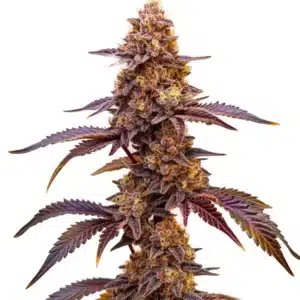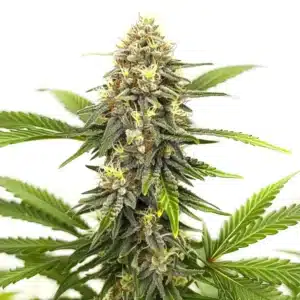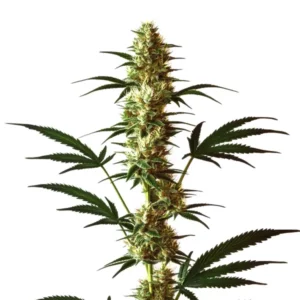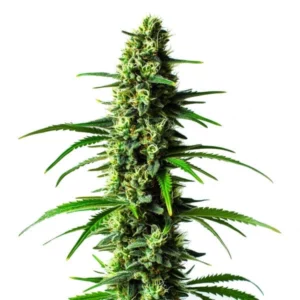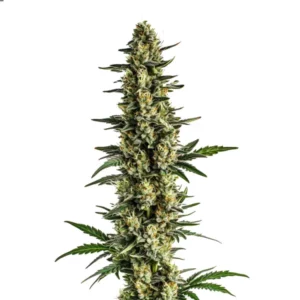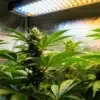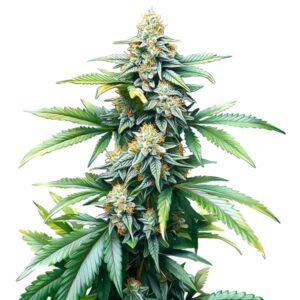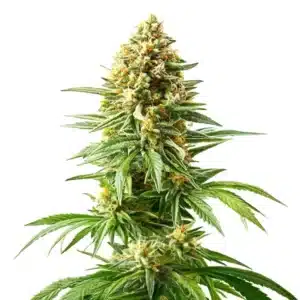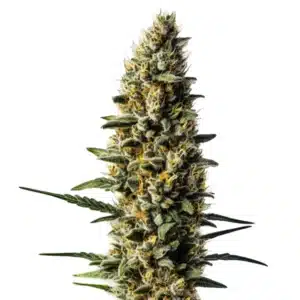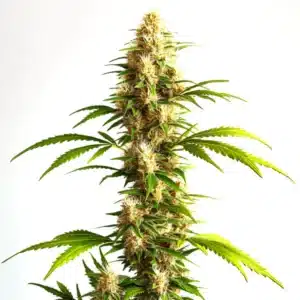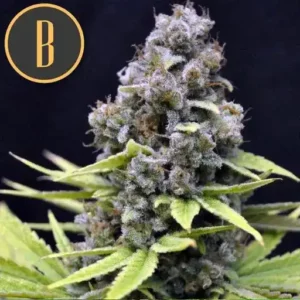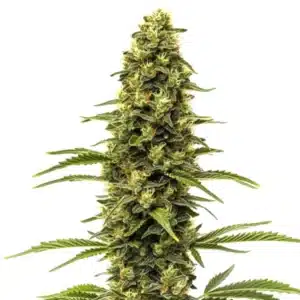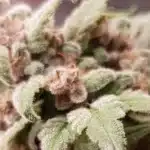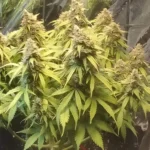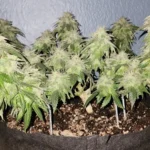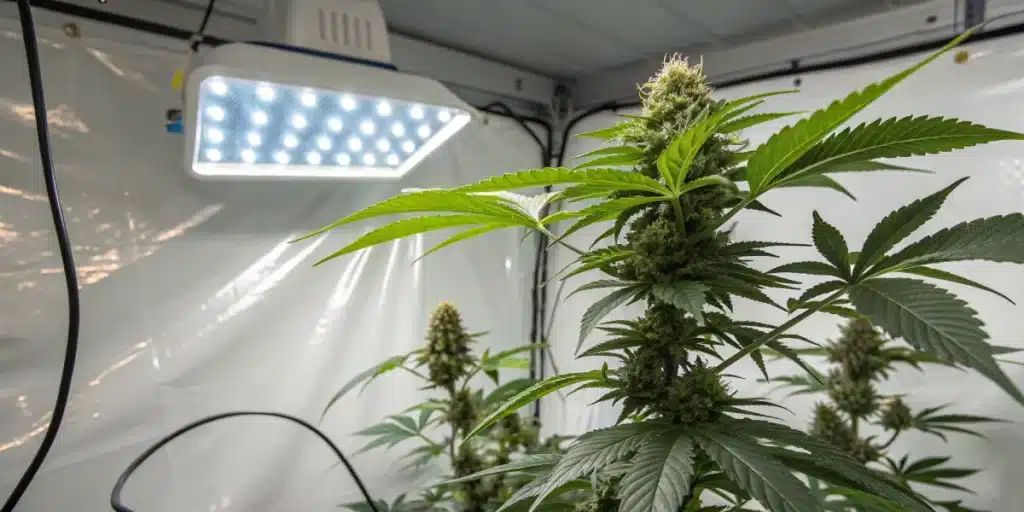
How to Grow Red Skunk Kush Weed Strain
Red Skunk Kush Weed Strain Description
Red Skunk Kush Weed Strain is a feminized hybrid derived from Red Skunk x Red Skunk. With medium THC levels between 14% and 18% and a low CBD content of around 0.5%, this strain is mostly Indica (70% Indica / 30% Sativa). It offers a strong and relaxing experience ideal for relieving conditions such as arthritis, insomnia, and pain. Growers appreciate its forgiving nature, making it a great option for beginners.
The strain produces moderately dense, resin-rich buds with a medium yield. Indoor yields typically range from 0.66 to 0.82 oz/ft² (200 – 250 gr/m²), while outdoor plants may offer between 17 and 21 oz per plant (500 – 600 gr/plant). Red Skunk Kush grows to a moderate height of around 4.92 ft (1.5 m) and finishes flowering in 8 – 10 weeks under proper conditions.
Recommended Strains
Red Skunk Kush
|
|
THC | 14% - 18% (Medium) |
|
|
Type | Feminized |
|
|
Yield | Low |
|
|
Phenotype | 70% Indica / 30% Sativa |
Afghan Hash Plant Regular
|
|
THC | 18% - 22% (Medium) |
|
|
Type | Regular |
|
|
Yield | Medium |
|
|
Phenotype | 90% Indica / 10% Sativa |
The terpene profile is especially notable. Delta 3 Carene and Linalool contribute to its anti-inflammatory and arthritis-relieving properties. Alpha-pinene and Beta-pinene enhance its benefits against arthritis and asthma, while myrcene, terpineol, and high levels of linalool promote a sleepy, calming state. Earthy, spicy, floral, and minty aromas blend with notes of lavender, cinnamon, cilantro, and pine, creating a complex flavor that is both berry and sweet. Though its primary effect is strongly relaxing, some users also report a subtle uplift in mood, offering a well-rounded experience.
Promos & Deals
Growing Environment
Red Skunk Kush thrives in a stable and controlled environment. Indoor cultivators should keep temperatures between 70°F and 80°F (21°C-27°C) during the day and allow a slight drop at night. During the vegetative phase, humidity should be maintained between 60% and 70%. When flowering begins, reduce humidity to 40%-50% to prevent mold and preserve resin quality.
High-quality LED or HPS lights are vital. Start with 18-20 hours of light during the early stages and switch to a 12/12 light/dark cycle as the plant enters flowering. For outdoor growers, choose a sunny location with well-draining, nutrient-rich soil. Amending the soil with compost or worm castings can significantly boost growth, and using wind protection helps maintain a steady environment.
Setting Up Your Grow Space
Red Skunk Kush Weed Strain Indoor Cultivation
For indoor growing, use a dedicated space such as a grow tent or small room. Cover walls with reflective material (like Mylar) to maximize light efficiency. Install oscillating fans and an exhaust system with a carbon filter to manage heat and odor. Start Red Skunk Kush in small pots using high-quality soil with a pH between 6.0 and 6.5. As the plants grow, transplant them into larger containers to support robust root development.
Red Skunk Kush Weed Strain Outdoor Cultivation
For outdoor cultivation, prepare your garden or raised bed by enriching the soil with organic matter. Choose a location with full sun and ensure the soil has excellent drainage. Simple windbreaks will protect the plants from strong gusts. Regular watering and timely weeding are essential for maintaining a healthy, fertile growing environment, which in turn supports consistent yields.
Seed Propagation and Germination
Start with premium feminized seeds of Red Skunk Kush from a trusted supplier. Soak the seeds in distilled water or place them on a damp paper towel for 24-48 hours to soften the seed coat and trigger the taproot. When a small taproot appears, plant the seed in a container with light, well-draining soil.
Keep the temperature around 75°F-80°F (24°C-27°C) and maintain humidity between 60% and 70% until seedlings develop their first true leaves. Gradually increase light intensity as the seedlings grow. This careful start establishes a strong foundation for vigorous growth.
Red Skunk Kush Weed Strain Vegetative Phase
During the vegetative stage, Red Skunk Kush grows rapidly and builds a sturdy structure. Provide 18-20 hours of light daily to promote vigorous leaf and stem development. Use a nitrogen-rich fertilizer to support robust growth. Active training methods, such as low-stress training (LST) or topping, help develop an even canopy and improve light penetration throughout the plant.
Regular monitoring of temperature, humidity, and watering is essential. Consistent care in this phase prepares the plant for a seamless transition into flowering, ensuring that robust, high-quality buds develop later.
Red Skunk Kush Weed Strain Flowering Phase
When the plant switches to the flowering phase, adjust the light cycle to 12 hours on and 12 hours off. During this period, Red Skunk Kush focuses its energy on forming thick, resinous buds with a complex flavor profile. Feed the plants with fertilizers high in phosphorus and potassium to enhance bud development. Keep temperatures cooler (65°F-75°F) and reduce humidity to 40%-50% to minimize the risk of mold and optimize resin production.
Support heavy branches with stakes or trellises if needed, and frequently inspect the buds with a magnifier to check trichome development. Harvest when most trichomes appear milky with some amber this indicates peak potency and flavor.
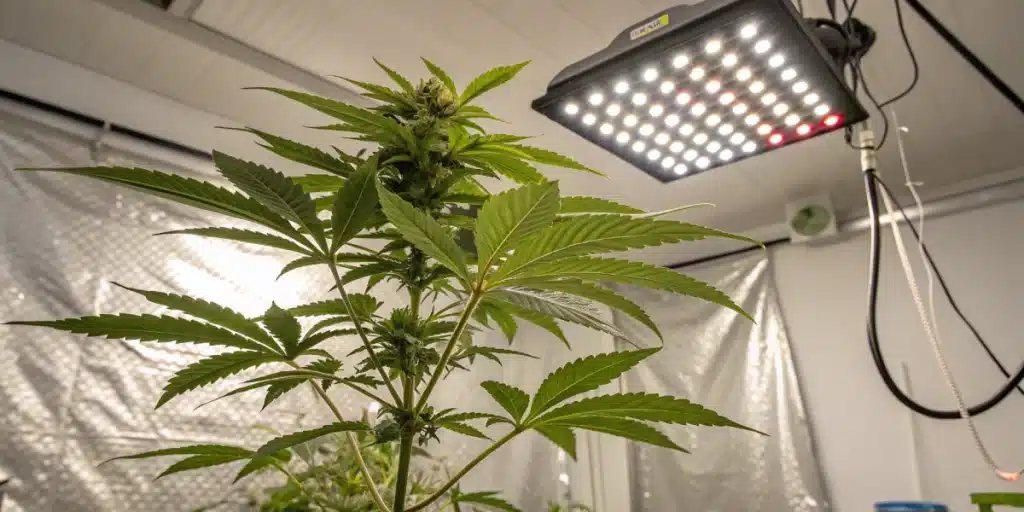
Fertilization and Nutrition
Proper nutrition is key to a successful harvest. Start with a nitrogen-rich fertilizer during the vegetative stage to build strong foliage, then switch to a blend high in phosphorus and potassium during flowering to promote bud growth. Keep the pH balanced between 6.0 and 6.5 to ensure optimal nutrient uptake.
Many growers also add organic amendments like compost or worm castings to further enrich the soil. Regularly monitor water and nutrient levels to avoid both overfeeding and underwatering. Active, precise management of nutrients supports healthy plant development and maximizes yield.
Pest and Disease Control
Maintain a clean grow space and inspect your Red Skunk Kush plants daily for signs of pests such as spider mites, aphids, or thrips. Use organic treatments like neem oil at the first sign of infestation. Ensure good airflow and remove dead or affected leaves promptly to reduce the risk of fungal diseases.
Quick, proactive interventions are essential for preventing issues that could compromise your crop’s health and yield.
Red Skunk Kush Weed Strain Harvesting and Curing
When most of the trichomes on your buds turn milky with some amber, it’s time to harvest Red Skunk Kush. Use clean, sharp tools to trim the branches carefully. Dry the buds in a dark, well-ventilated area with temperatures between 60°F and 70°F, ensuring adequate spacing for airflow.
After drying, cure the buds in airtight glass jars. Open the jars daily during the first week to release excess moisture, then allow the buds to cure for 2-4 weeks. This curing process refines the flavor and potency while preserving the strain’s unique spicy, floral, and berry-sweet aroma.
Red Skunk Kush Weed Strain Indica or Sativa?
Red Skunk Kush is primarily an Indica strain (70% Indica / 30% Sativa), which means it delivers a strong, relaxing experience. While its sedative effects help relieve pain, insomnia, and arthritis, it also maintains a subtle balance that some users find creatively inspiring.
Advantages and Disadvantages
Advantages: Red Skunk Kush produces aromatic, resin-rich buds with complex flavors featuring berry-sweet, spicy, and floral notes. It is relatively easy to grow, making it an excellent choice for beginners. Its moderate yield and shorter flowering period (8-10 weeks) are added benefits.
Disadvantages: The strain requires precise nutrient and environmental control to maintain its delicate flavor profile. Yields, though moderate, may require additional support during flowering, and mismanagement of conditions can affect its potent effects.
Why Buy Red Skunk Kush Weed Strain
Choose Red Skunk Kush if you’re looking for a strain that offers robust, relaxing effects coupled with a complex flavor profile. Its ability to relieve conditions such as arthritis, insomnia, and pain makes it highly suitable for medicinal users. Trusted suppliers in the Blimburnseeds.com catalog provide quality genetics, ensuring consistent and rewarding performance even for beginner growers.
Common Growing Problems
Watch closely for nutrient imbalances, overwatering, or pest infestations. Environmental fluctuations can stress Red Skunk Kush weed strain, so quick, active management of heat, humidity, and light levels is crucial. Regular inspection and timely adjustments help prevent issues that could reduce yield or quality.
Similar Strains
Afghan Kush
Afghan Kush is known for its heavy indica effects and resinous buds. It delivers strong relaxation and pain relief, making it a popular alternative for users seeking similar calming properties.
Skunk #1
Skunk #1 shares genetic lineage with Red Skunk Kush weed strain, providing a pungent, earthy aroma and a robust, relaxing high. Its ease of growth and reliable yields make it a favored choice among growers.
Critical Kush
Critical Kush combines a potent, relaxing effect with dense bud production. Its simple cultivation process and stable performance offer a dependable option for both indoor and outdoor growers.
Tips for Professionals
Advanced growers use timers, quality sensors, and organic supplements to optimize every aspect of cultivation. Keeping detailed logs of light cycles, nutrient adjustments, and environmental data is essential for fine-tuning performance. Incorporate advanced training techniques like LST and topping to improve canopy structure and light penetration, and always be ready to make quick, active adjustments to maintain optimal conditions.
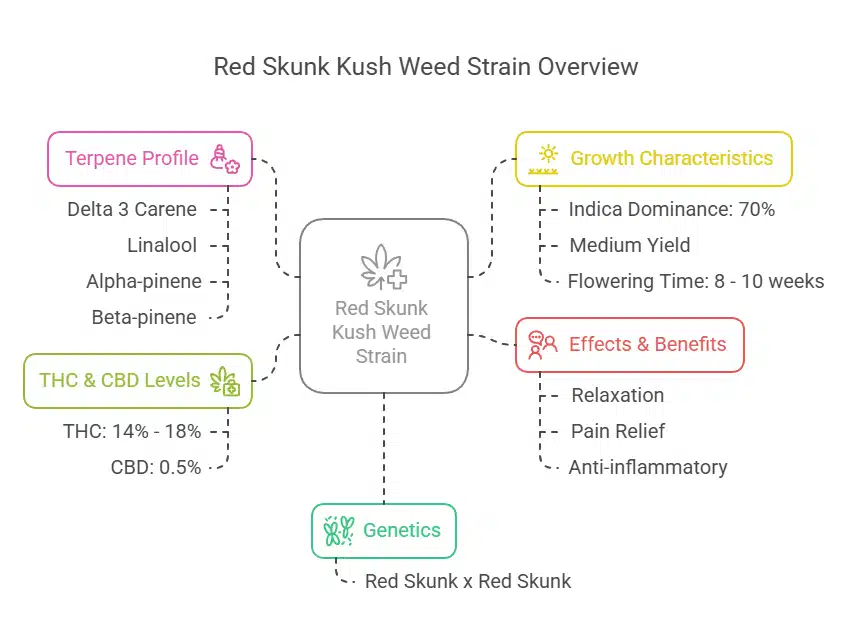
FAQs
What makes Red Skunk Kush unique?
Its combination of spicy, floral, and berry-sweet flavors along with a strong relaxing effect sets it apart. The strain is known for easing pain, insomnia, and arthritis while remaining easy to grow.
How long is the flowering period?
Red Skunk Kush flowers in about 8-10 weeks under the right conditions, producing dense, resinous buds with a complex flavor profile.
Can I grow it outdoors?
Yes, it thrives outdoors in sunny, well-draining soil supplemented with organic matter. Adequate wind protection and consistent care are essential for optimal growth.


